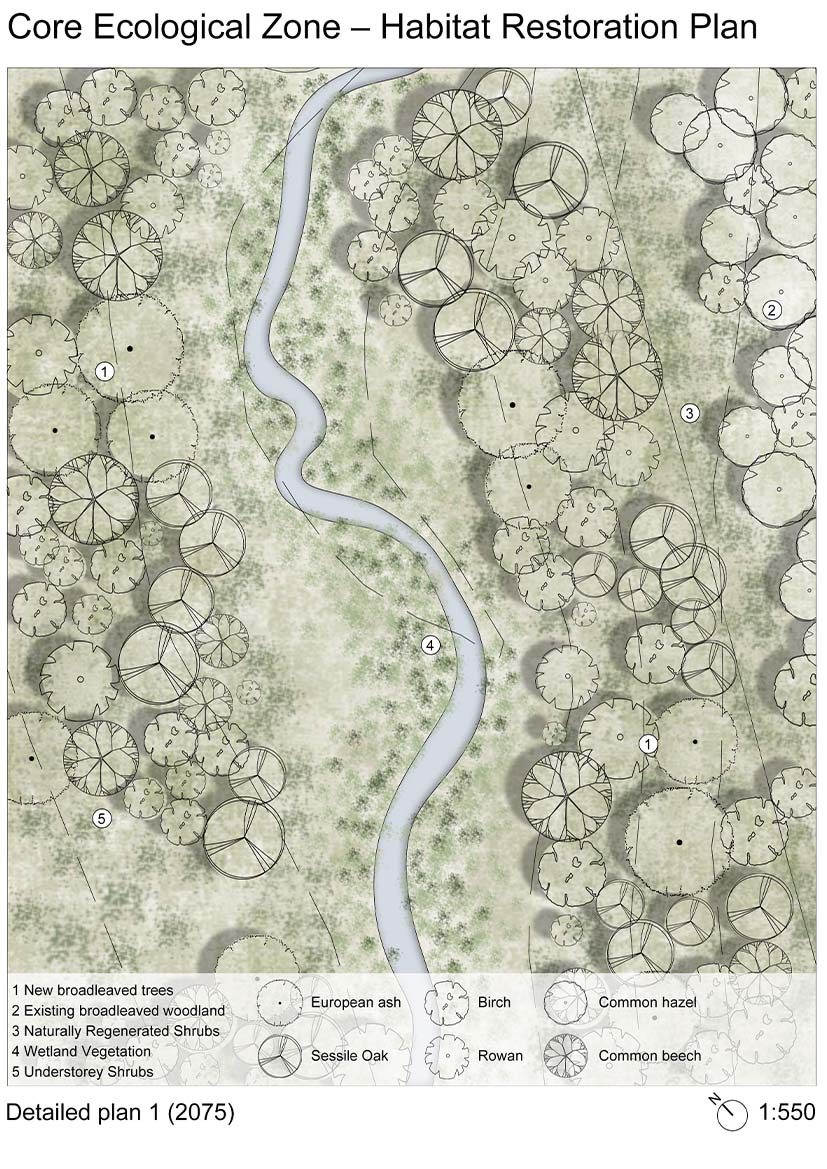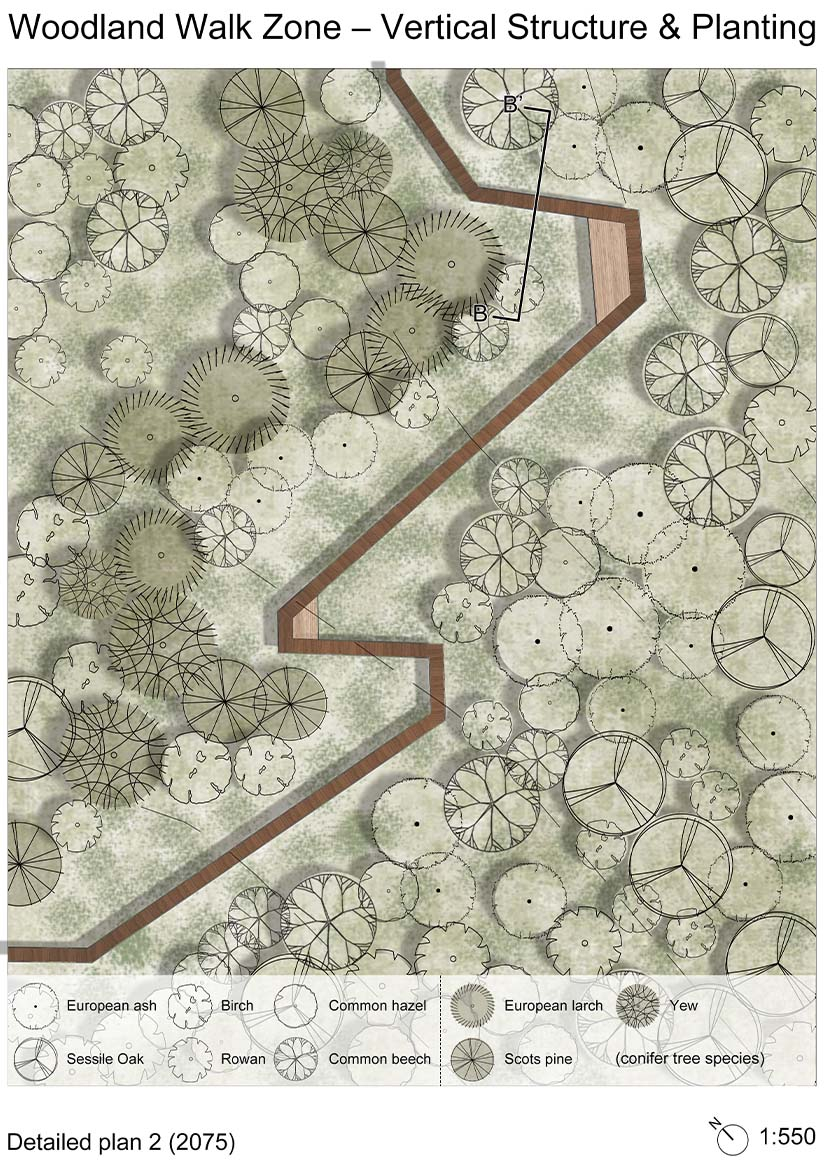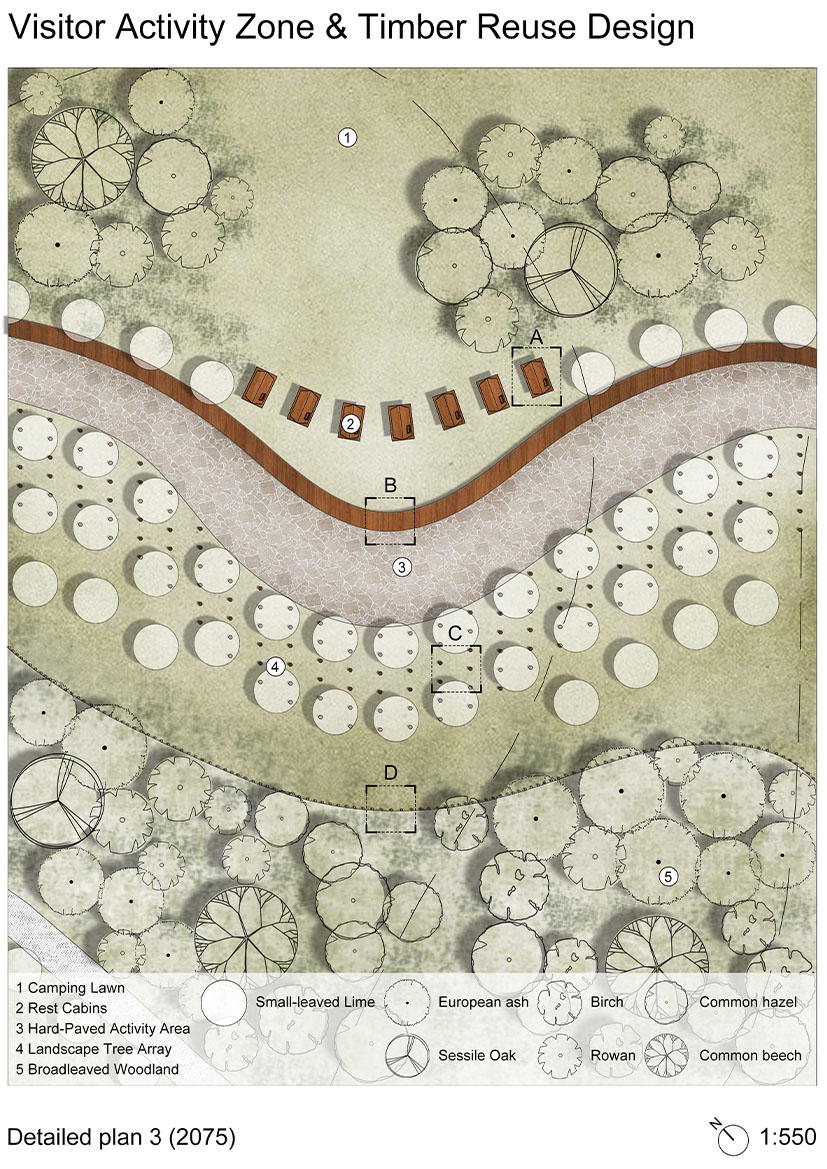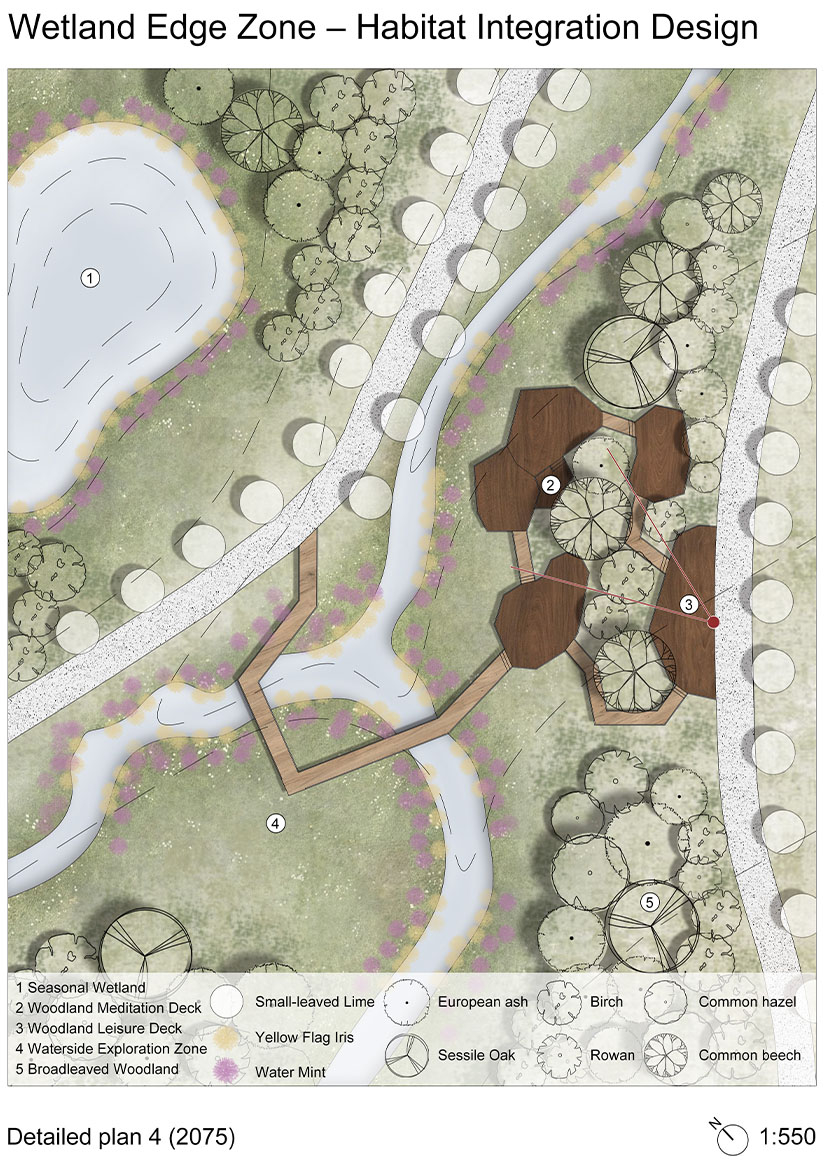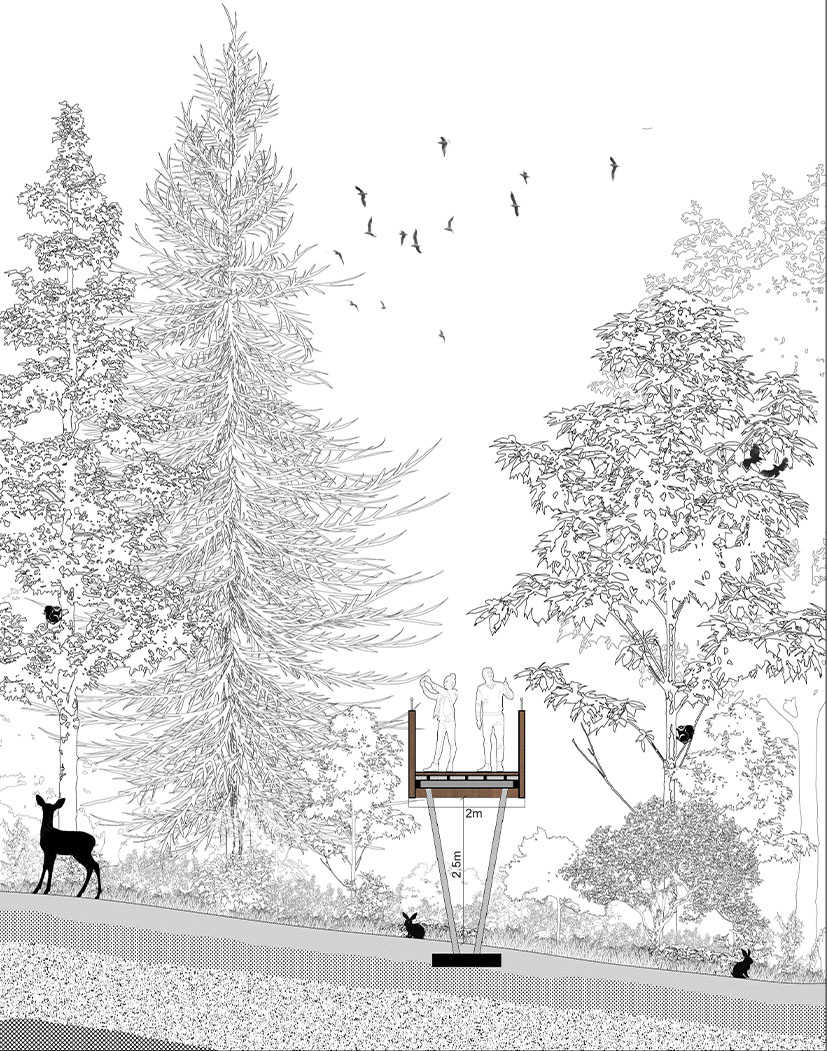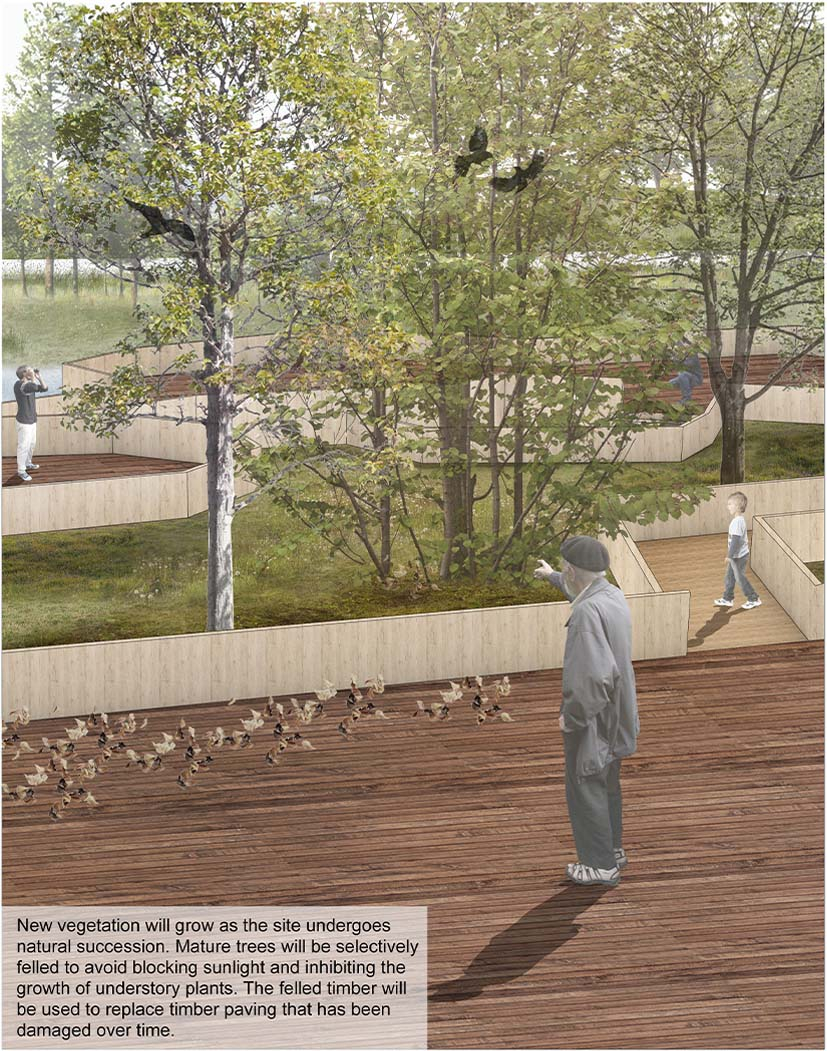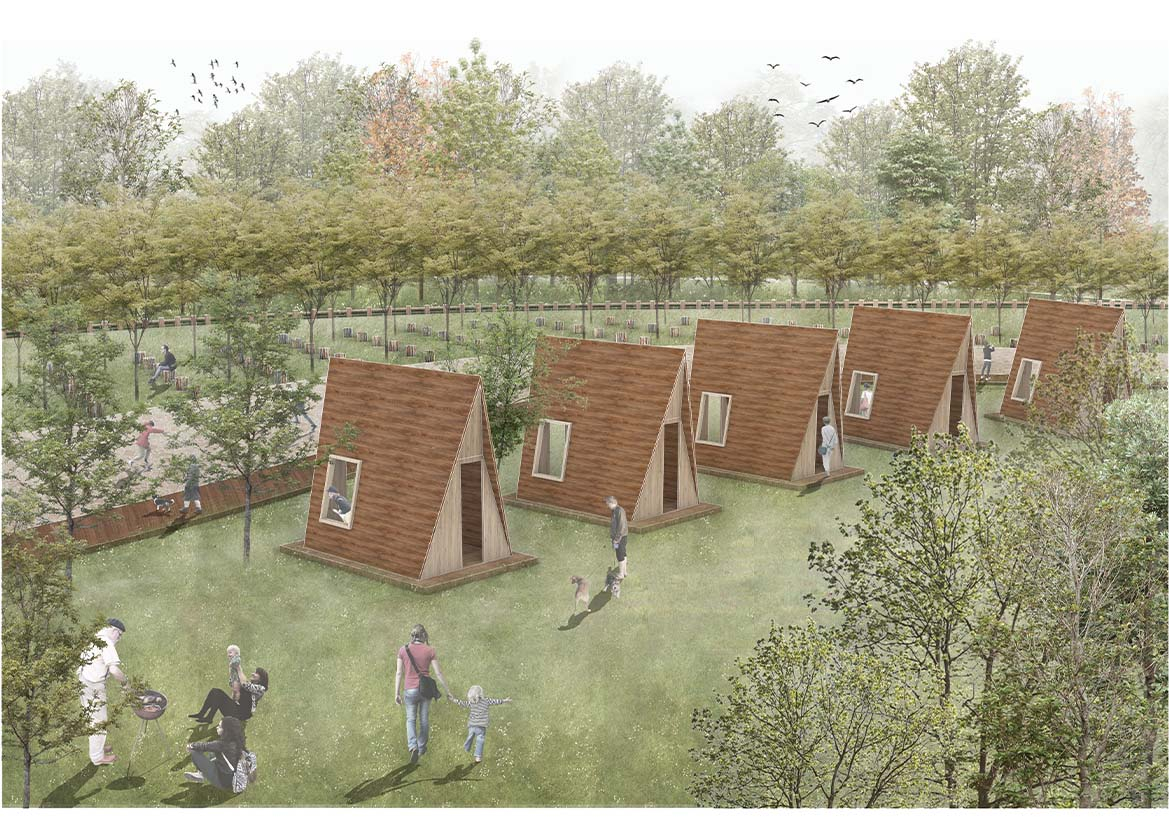The project is located in the Dunbar High Wood area. A long period of plantation economic woodland planting has caused the site’s ecological fragmentation. Large areas of Sitka spruce on the site disrupt the soil and hydrological systems, block species migration paths, and restrict public access.
The design is based on the theory of ecological succession and landscape connectivity, and proposes a phased strategy for the gradual conversion of the planted economic forest into a mixed and broadleaved woodland. The strategy includes Continuous Canopy Forestry, Applied Nucleation, Natural Succession Expansion, and the introduction of a public pathway system. The aim is to re-create ecological continuity and to build a public-access, multi-layered green space that combines ecological restoration with low-disturbance use. A fragmented ecological corridor in the site is reorganised to become the main link between species movement and human activities.
Wenting Shi
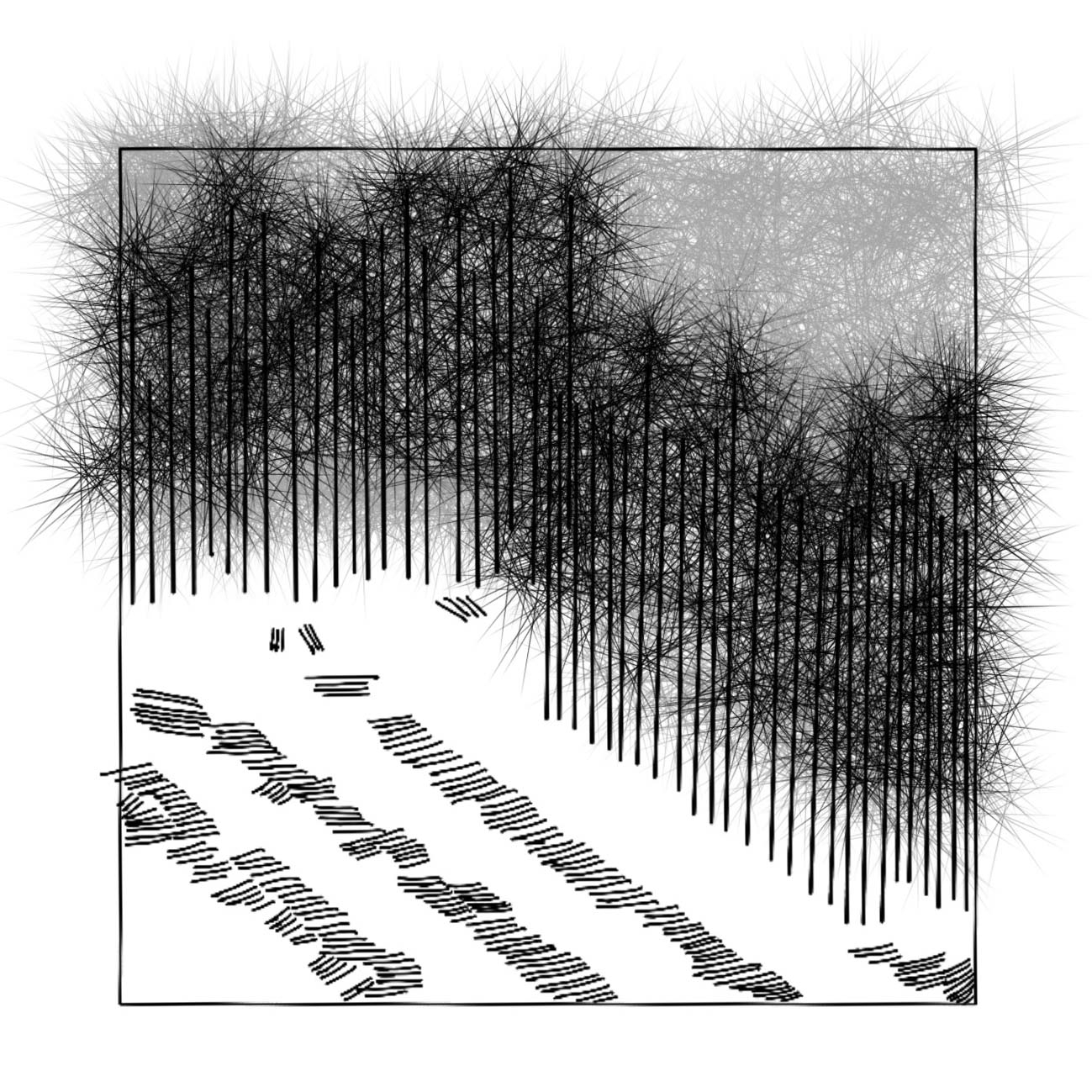

Project description
What I found on the site...
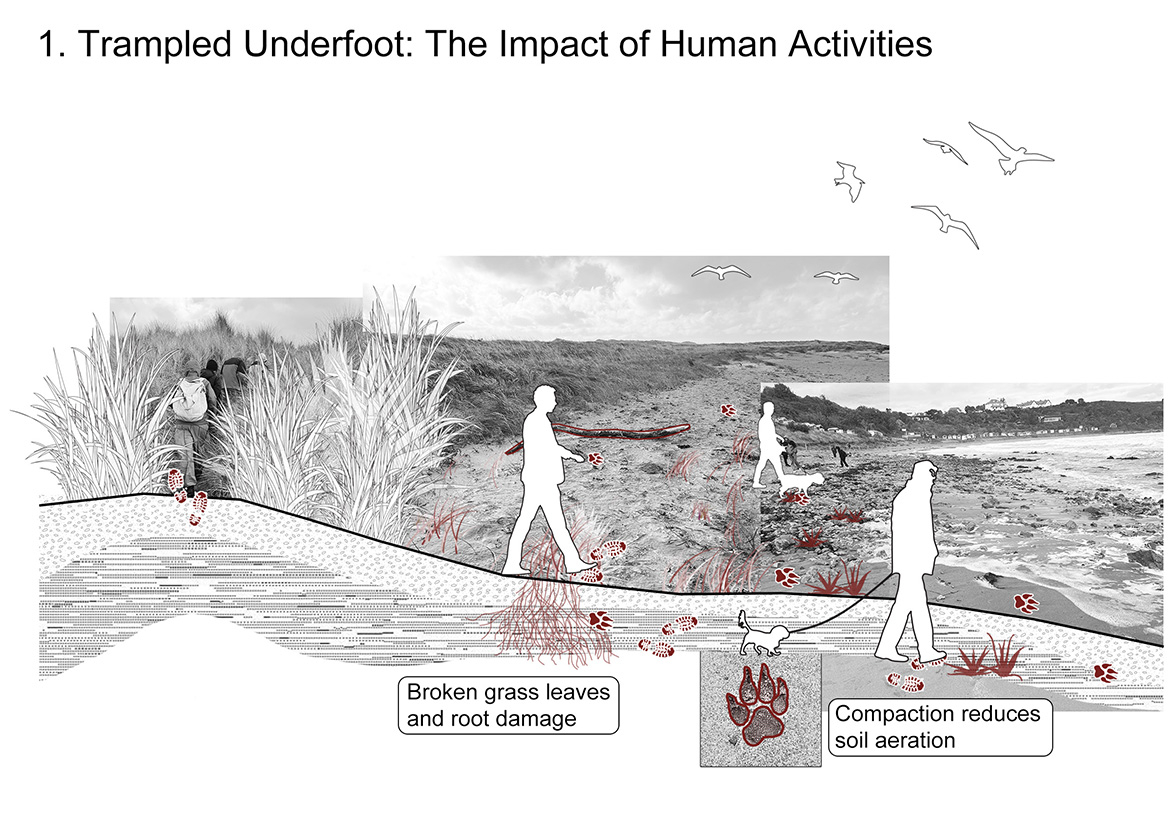
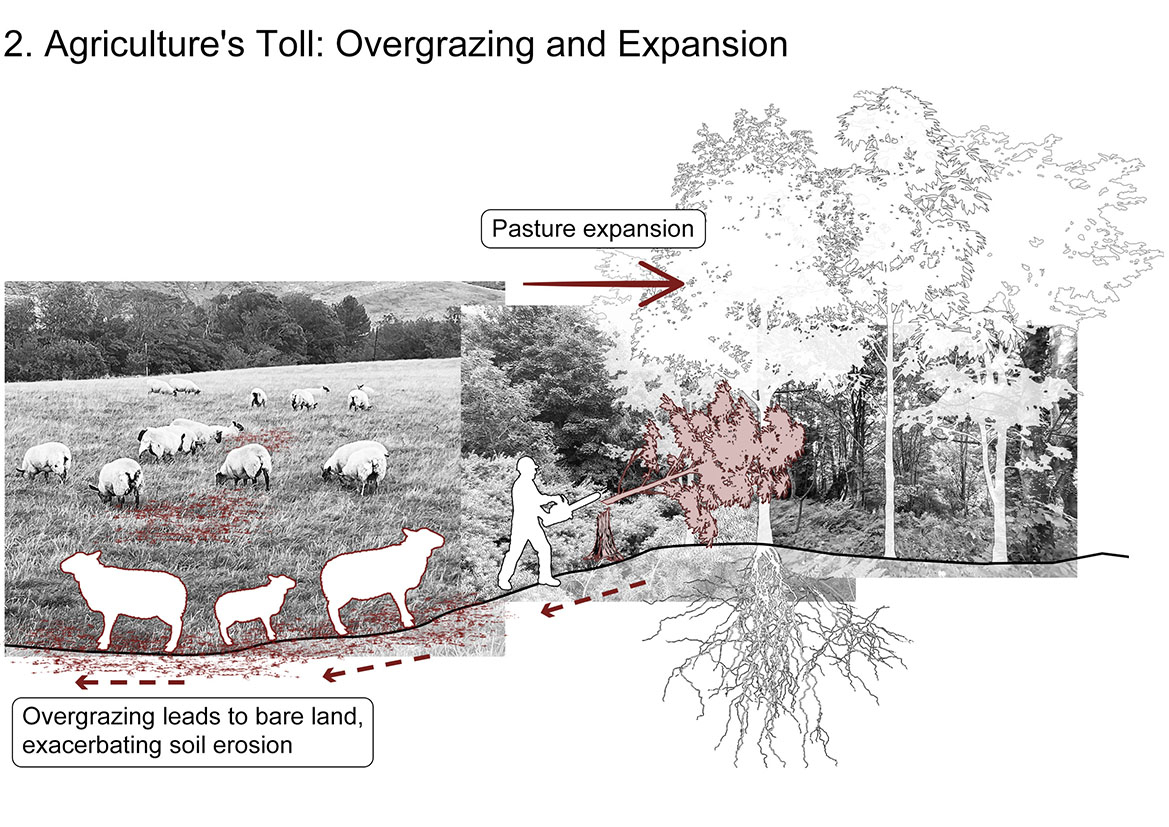
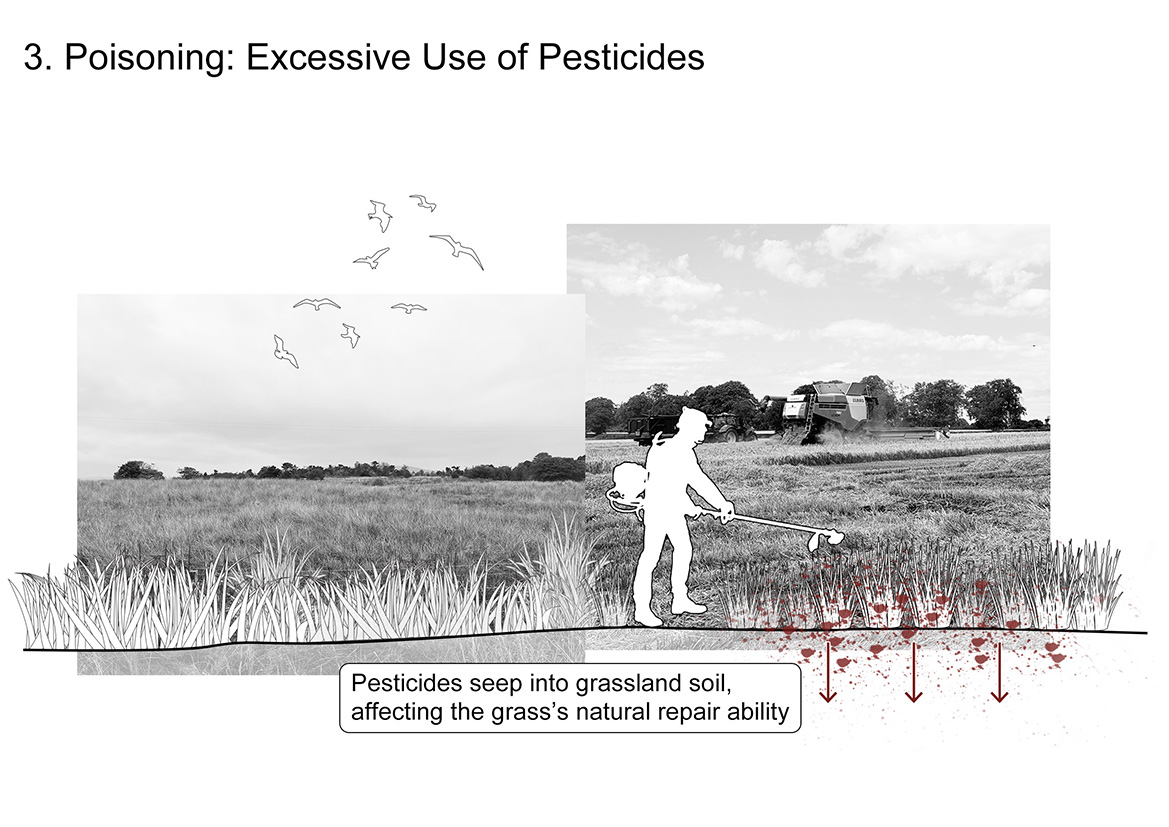
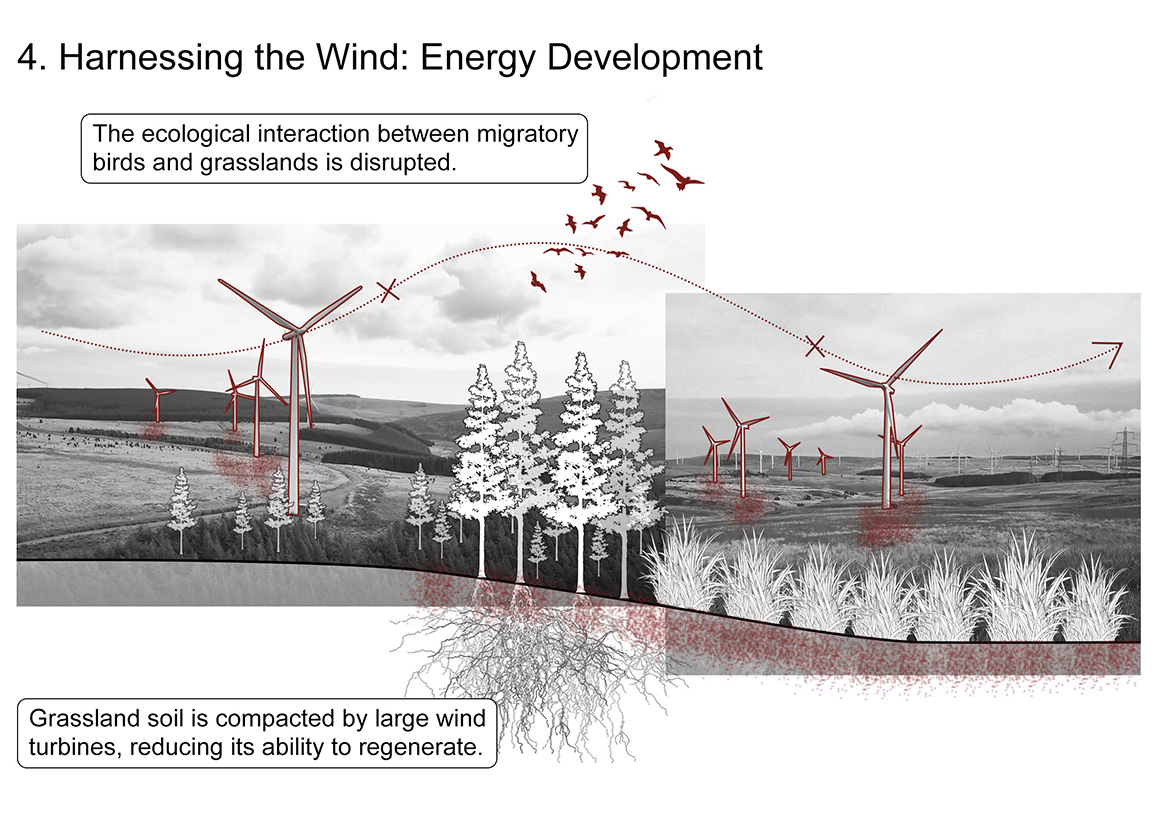
Historical Ecological Framework (1853)
The mapping shows that the landscape of the site in 1853 consisted mainly of continuous native woodland with the usual natural ecological corridors. The historical maps, analysed in conjunction with the existing woodland and industrial development, show how agricultural expansion and industrial development have progressively destroyed the original forest system, laying the foundation for today's ecological rupture and loss of biodiversity.
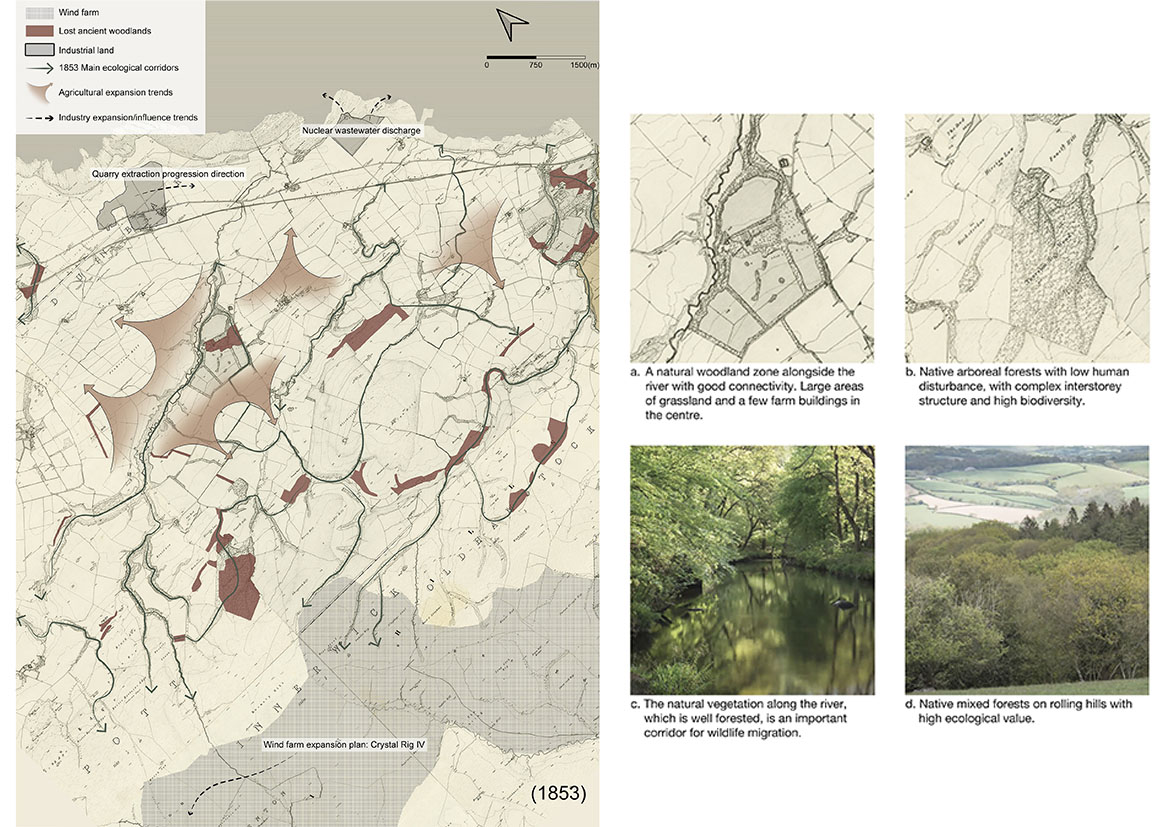
Current Status of Site Woodland
This map shows the current distribution of woodland in the region. The woodland has a high proportion of planted economic woodland, interspersed with a small amount of original woodland and scattered shrubs. Due to the extensive use of the exotic monoculture Sitka spruce, the woodland is characterised by a neat structure but low ecological diversity, which also restricts the free movement of wildlife between different areas. The site presents a problem of landscape fragmentation.
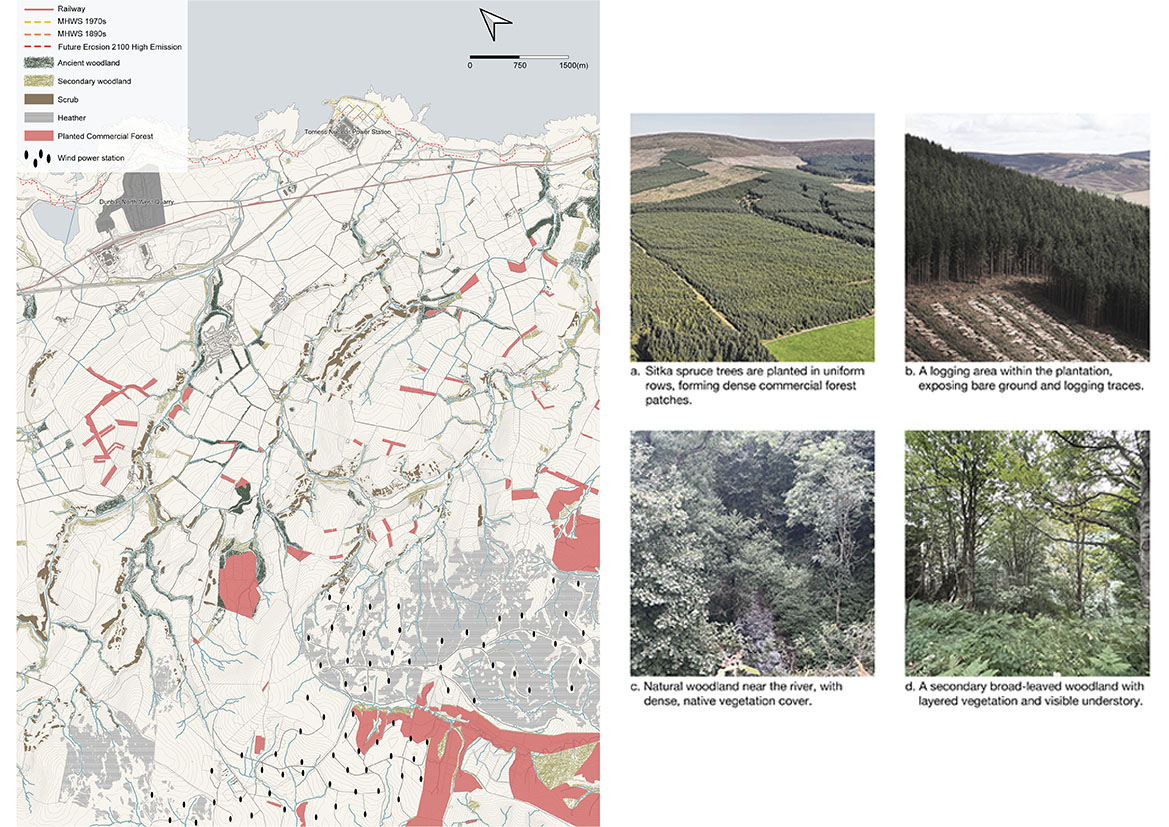
Restoring Connectivity Through Phased Woodland Transition
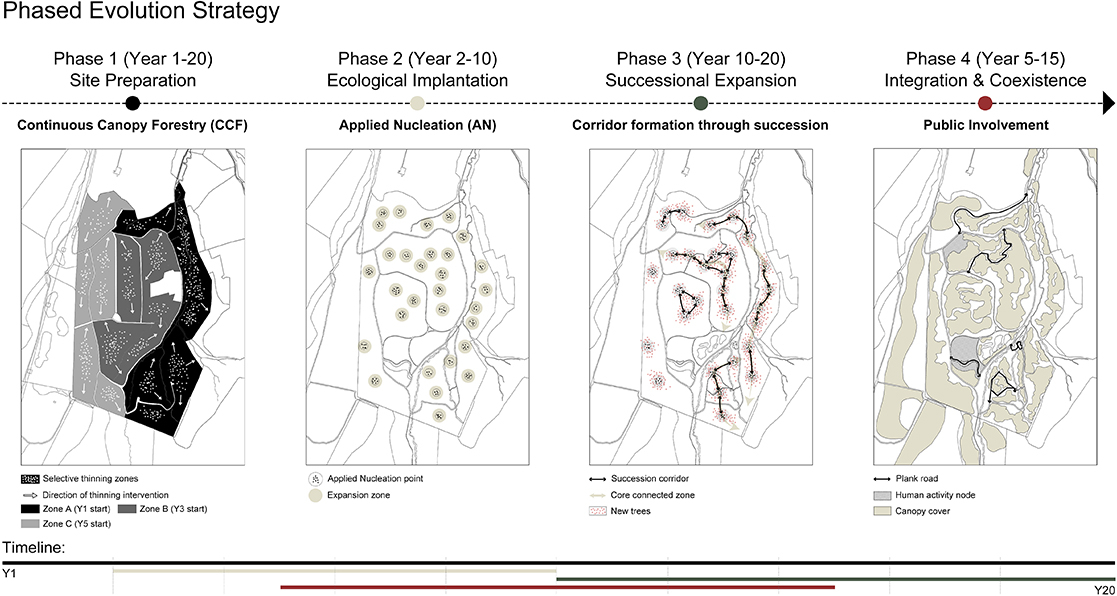
Main strategies: Continuous Canopy Forestry (CCF) & Applied Nucleation (AN)
The operation process of Continuous Coverage Forestry (CCF):
It begins with a comprehensive tree survey to assess forest structure and health. Based on these findings, the site is divided into zones for phased intervention. Within each zone, thinning is carried out to remove low-quality or overcrowded trees, while ensuring that overall canopy continuity is maintained. Gaps are strategically retained to introduce light and space for understory regeneration and nucleation planting. Finally, monitoring is conducted to assess ecological response and guide further action.
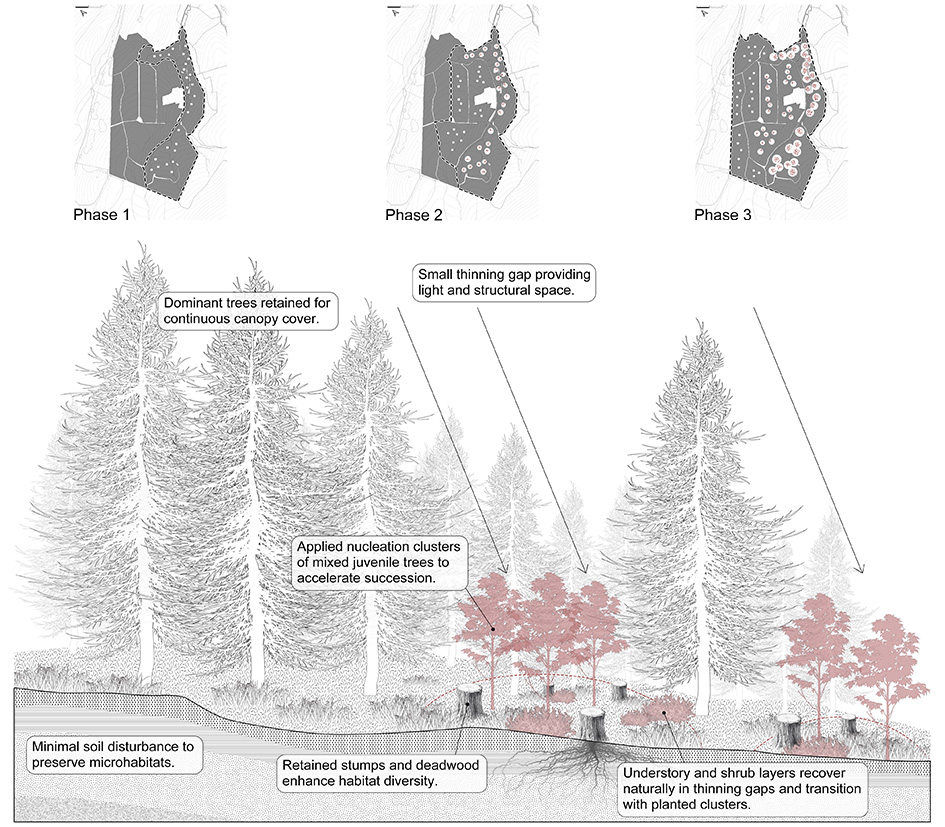
Reconnecting the Fragmented
A 50-Year Ecological Transition
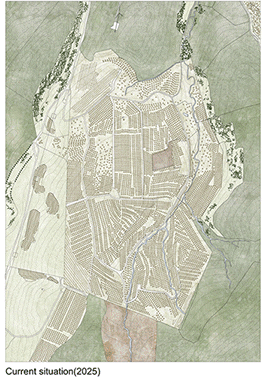
Detail Design: Spatial Interventions at Key Nodes
